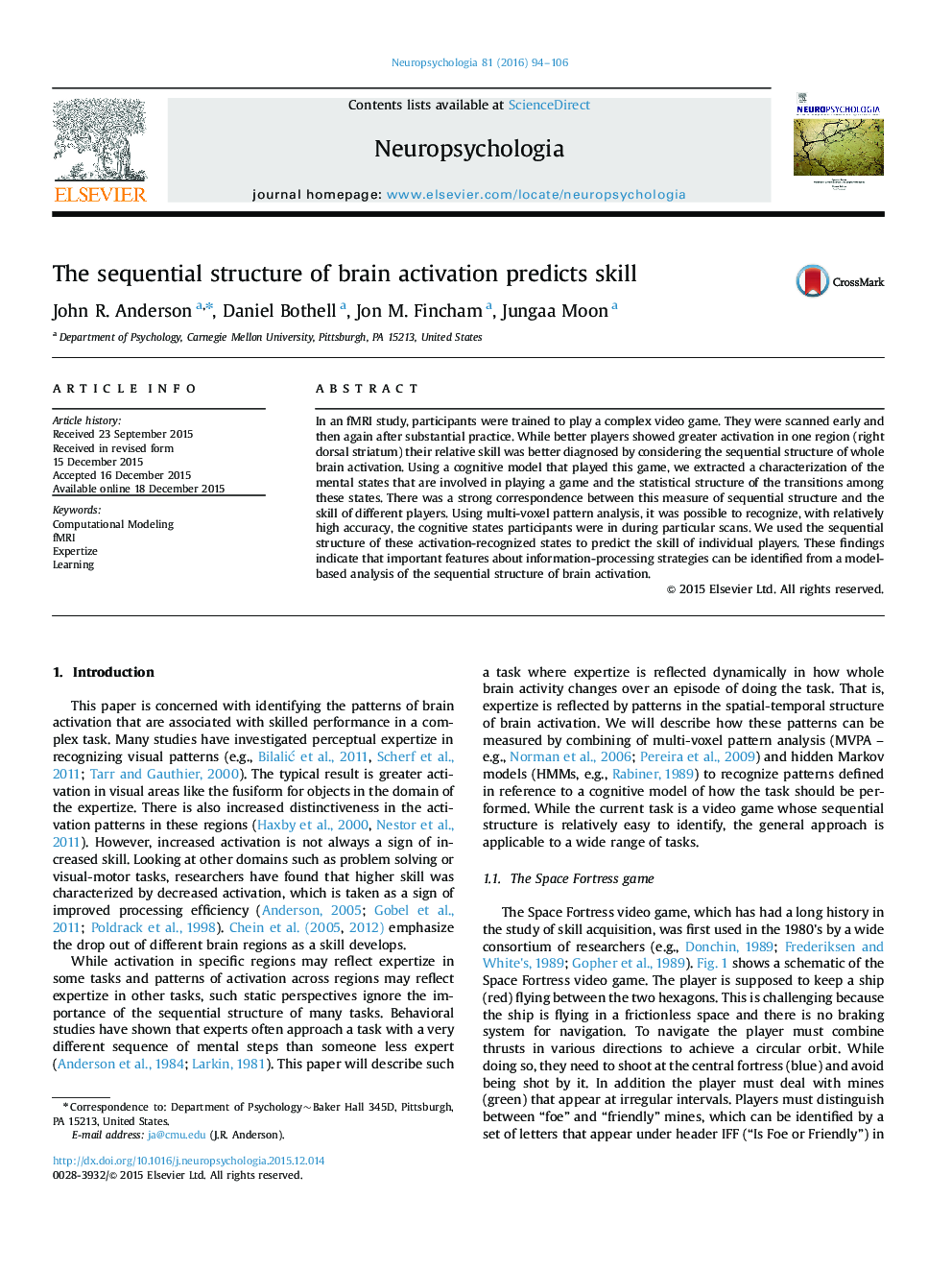| Article ID | Journal | Published Year | Pages | File Type |
|---|---|---|---|---|
| 7319427 | Neuropsychologia | 2016 | 13 Pages |
Abstract
In an fMRI study, participants were trained to play a complex video game. They were scanned early and then again after substantial practice. While better players showed greater activation in one region (right dorsal striatum) their relative skill was better diagnosed by considering the sequential structure of whole brain activation. Using a cognitive model that played this game, we extracted a characterization of the mental states that are involved in playing a game and the statistical structure of the transitions among these states. There was a strong correspondence between this measure of sequential structure and the skill of different players. Using multi-voxel pattern analysis, it was possible to recognize, with relatively high accuracy, the cognitive states participants were in during particular scans. We used the sequential structure of these activation-recognized states to predict the skill of individual players. These findings indicate that important features about information-processing strategies can be identified from a model-based analysis of the sequential structure of brain activation.
Keywords
Related Topics
Life Sciences
Neuroscience
Behavioral Neuroscience
Authors
John R. Anderson, Daniel Bothell, Jon M. Fincham, Jungaa Moon,
